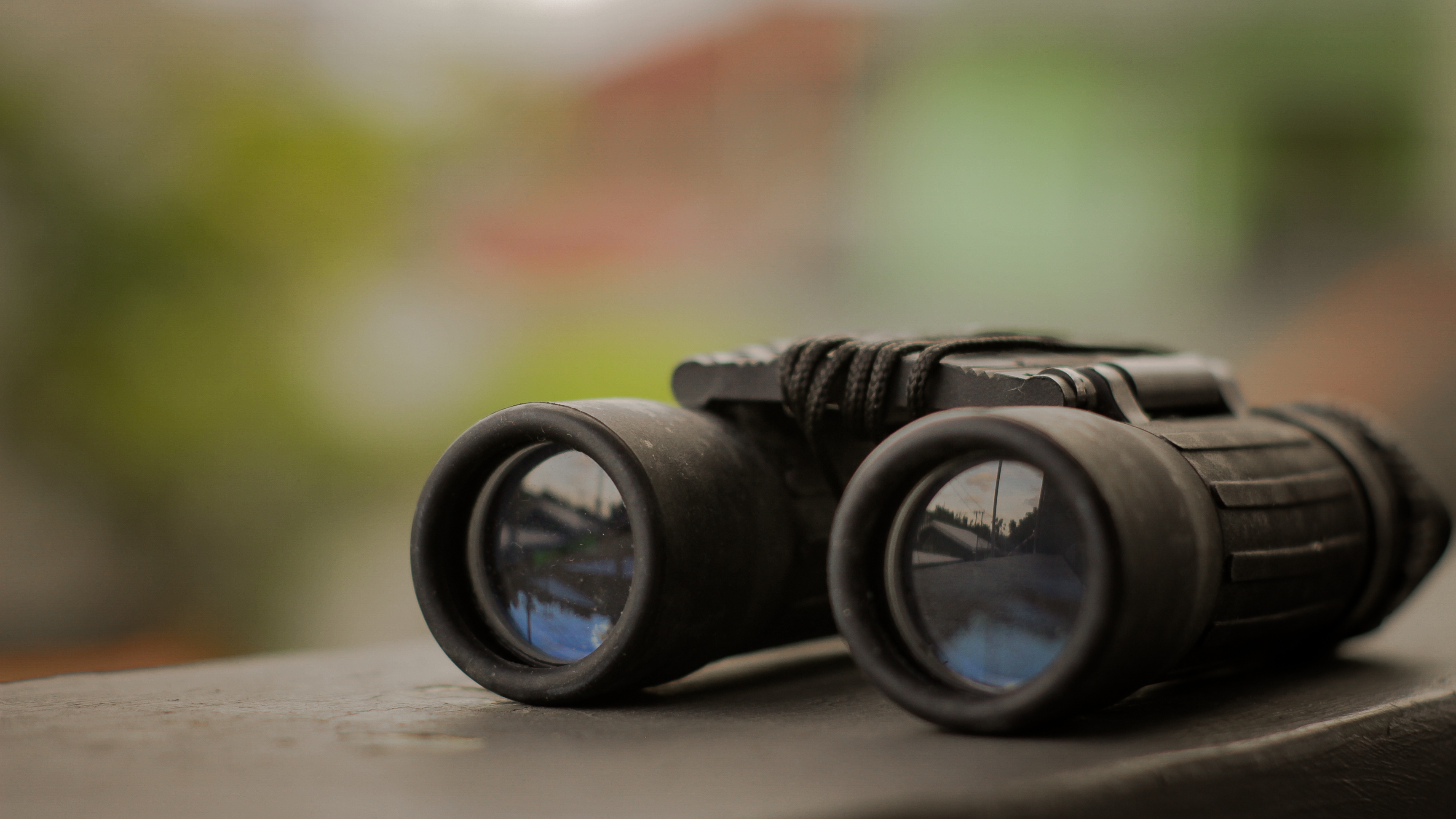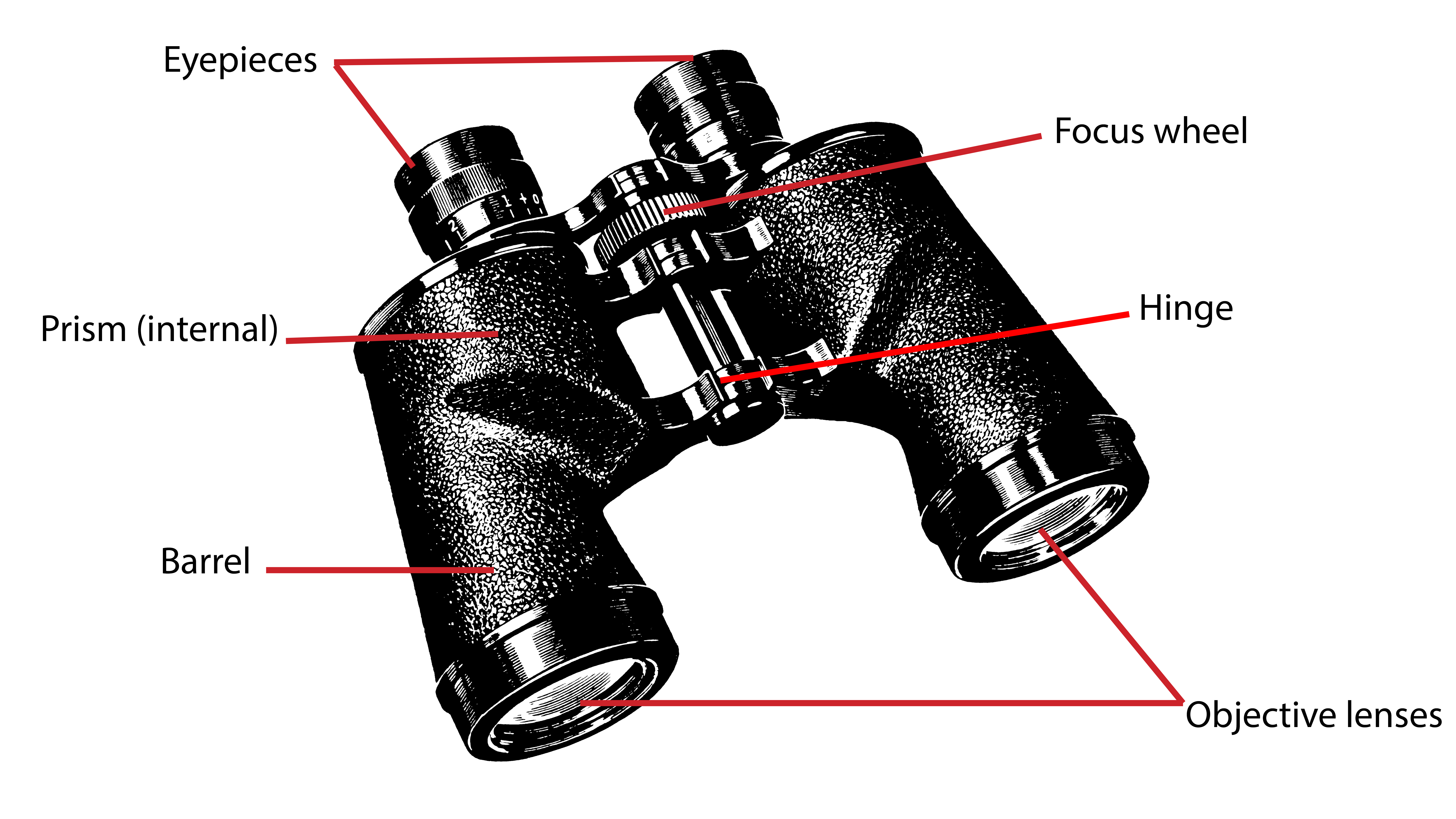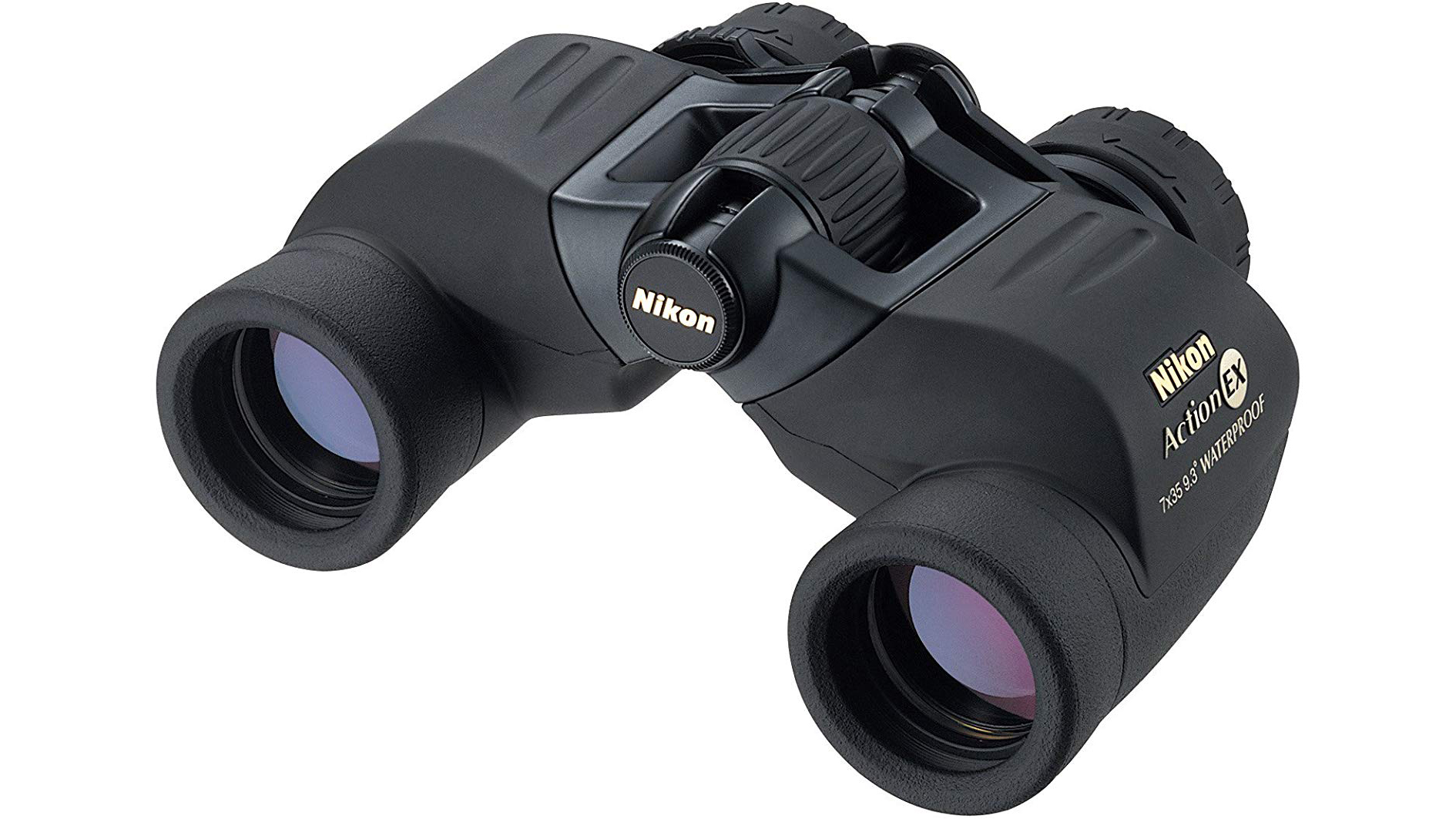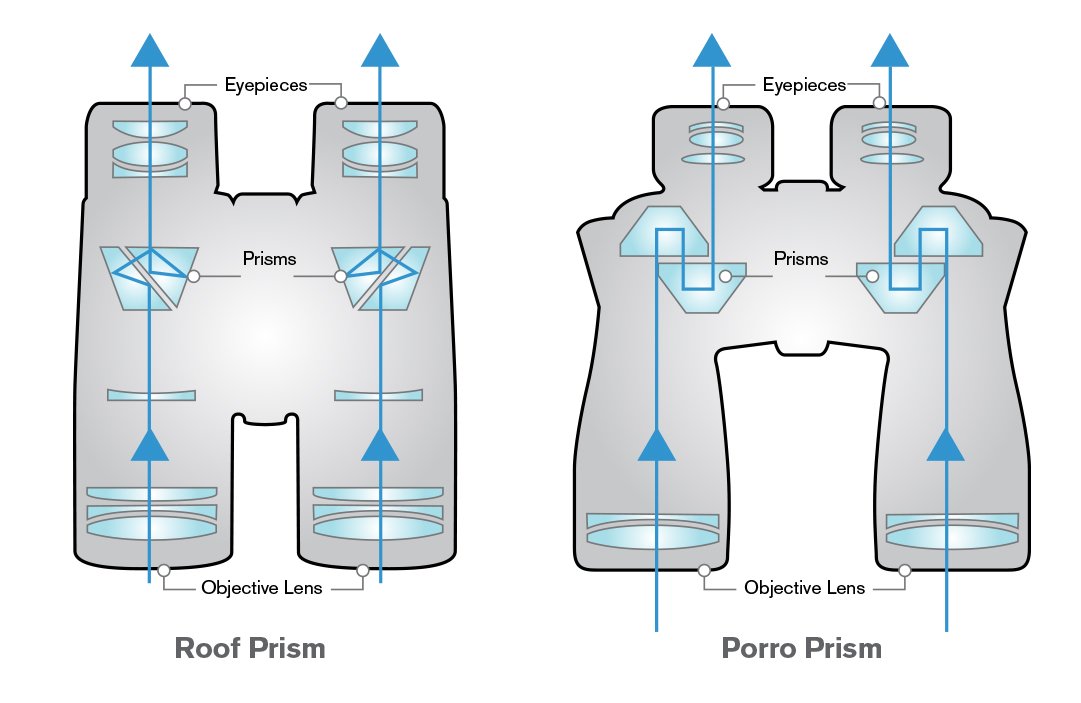How binoculars work
A few minutes getting to know how your binoculars work is time well spent, if you're planning on using them in your stargazing sessions.

Learning the ins and outs of how your binoculars work is a bit like finding your way around the night sky: a little time spent learning what all the things are will make for a much more pleasant experience.
Your binoculars are essentially a pair of tubes or barrels joined by a hinge, containing some bits of glass or plastic cunningly arranged to provide a brighter, magnified view of distant objects. The optical components are arranged in three groups: the objective lenses, the internal prisms, and the eyepiece assemblies.
Objective Assessment
The objectives – the big lenses up front – do the important job of collecting light. The bigger they are, the more light they can gather and the brighter and more magnified an image they can produce.
A human eye collects light through the pupil, which is usually about 3mm across during the day. In the dark, a pupil will expand (dilate) up to perhaps 8mm. It takes a few minutes for the dilation to be complete and the eye to become dark-adapted, but this dilation allows about seven times as much light to enter the eye. In photographic terms, it's like opening the aperture by three stops.

Even modest binoculars make an enormous improvement on that. 30mm objective lenses have an area around 14 times, and 70mm lenses about 77 times, as large as a dark-adapted pupil. That's why you can see so many stars with binos that are just invisible to the naked eye.
As a side note, while those 70mm lenses are wonderful for wildlife watching, they're a little unwieldy if you want to point them at the sky – which is why we reckon that the best binoculars for stargazing usually have 50mm lenses. If you're really keen on maxing out things like aperture and magnification, then you may want to opt for one of the best telescopes on the market instead.
Don’t Forget Your Coat
Not all the light that enters the binoculars will make its way to your eyeball. Each optical surface causes light to be lost: some is reflected back, and a little is simply absorbed. Lenses are treated with special coatings to reduce reflections. These make a huge difference, but transmissivity can never be 100%.
Breaking space news, the latest updates on rocket launches, skywatching events and more!
An uncoated lens surface loses around 4-5% of the light passing through it. Multiply this by the numerous surfaces – each side of each lens, plus the prisms – and as much as a third of the total incident light might be wasted. Good quality coatings reduce this to a fraction of one percent per surface, meaning the whole system may lose only 5% or so.

Manufacturers keep their coatings recipes a closely-guarded secret, but they're usually based on magnesium fluoride or calcium fluoride. A blue color usually indicates a single magnesium fluoride coat, while two-tone (blue/purple or purple/amber for instance) points to multi-coating – a sign of better quality. A strong green color might indicate the coating is too thick and will have poor performance.
Your lenses will be described as either coated (a single coat on at least one surface), fully coated (single coat on all major surfaces), or multi-coated – meaning more than one layer on several surfaces. Roof prism binos (see below) may also have a phase correction coating to reduce internal loss of light.
The coating is fairly, which is why it's important to know how to clean binoculars properly (without damaging them.)
Prism break
Light gathered by the objectives travels down the barrels to the prisms, where it is reflected a couple of times. Traditional binoculars use Porro prisms, while some modern types use roof prisms.
What’s the difference? A Porro assembly consists of two prisms, each like a right-angle triangle. The light beam enters, is reflected twice through 90 degrees by each prism, and ends up travelling parallel to its original direction, but offset a few centimeters to line up with the eyepiece. The image is inverted and reversed, which counteracts the inversion effect of the optics and delivers an erect image to the eye. In addition, the optical path has been lengthened, which allows the overall binocular to be more compact.
A roof prism performs similar functions, but with a pair of prisms that send the light back and forth internally. This allows the eyepieces to line up with the objectives, making for lighter and more compact binos.

Does this mean roof prisms are better? In a word, no. Not for astronomy anyway. They put the light through more internal reflections, each one robbing the beam of a few more photons and making for a dimmer final image. They are typically more expensive than Porro binos, and deliver a narrower field of view with less depth of field. They're great for birdwatching, but are second best for stargazing.
Adjust to suit
Conventional binoculars offer three types of adjustment – the inter-eye distance, focus, and dioptre – all of which are very simple. First is the fit to your eyes, made by opening or closing the main hinge. Second is the focus, adjusted by turning the focus wheel mounted along the hinge. In binocular astronomy, there should be little need to adjust focus once set, because every object is very distant – effectively at infinity in optical terms.
The exception may be the moon, which also happens to be about the most rewarding object to observe through binos. The most dramatic views are to be had during the new moon, when sunlight throws deep shadows from the mountains. Happily, the new moon is best viewed during early evening, so you don’t even lose any sleep.
To get a good focus, though, it is vital to first set the dioptre adjustment correctly. One of the two eyepieces can be rotated, which moves it a little in or out from the barrel. It's usually marked with +/- and perhaps a graduated scale. Adjusting this correctly will compensate for any difference between your two eyes, ensuring the best view of the heavens.

Dioptre adjustment is best done during daylight. Using only the eye on the non-adjustable eyepiece, focus on a distant object – the further away the better. Then close that eye, open the other, and using only the dioptre adjuster, turn the eyepiece in or out until the object is again in focus. Check each eye separately, and then the binos should be perfectly adjusted to your eyes.
Some larger types of binocular require each tube to be focused independently, in which case there's no dioptre adjustment to fiddle with. These are basically paired telescopes!
The other adjustment you may come across is a zoom lever, which alters the magnification of the binos. It's usually placed under one barrel, for thumb operation. Zoom instruments use additional optical elements and consequently transmit a bit less light, and are also heavier than standard binos, but can be great fun for getting into the detail of lunar craters.

Russ Swan is a UK-based freelance science writer and author with a love of all things related to space and aviation. He built his own 100mm refractor telescope from some bits found in a military surplus store, and once had lunch with Neil Armstrong. His popular science book The Physics Behind… explains not just how the universe works, but why. He tweets (occasionally)!
